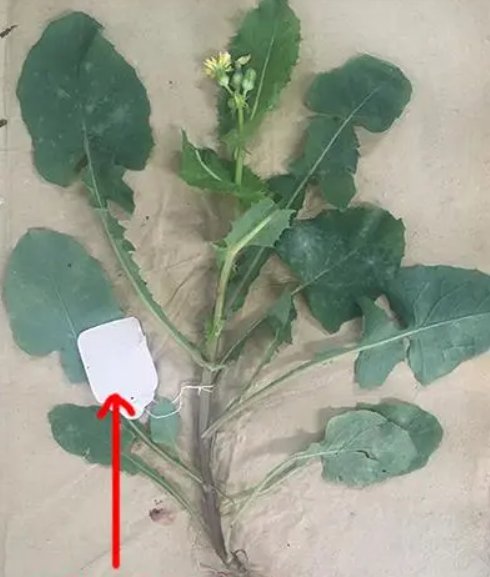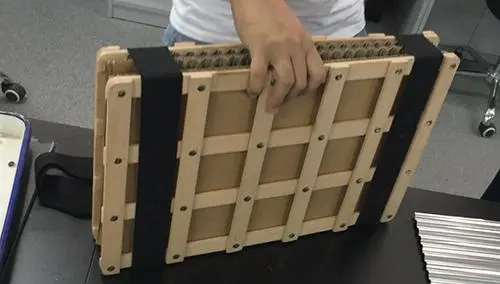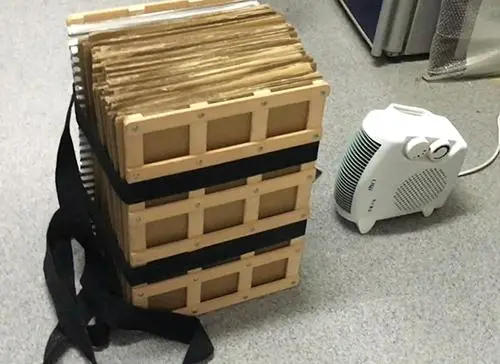Plant specimen making process
The plant specimen we often refer to refers to the specimen made by pressing fresh plant materials with absorbent paper to dry them and then binding them on paper. This type of specimen is the most common form of plant specimens – wax leaf specimens, also known as pressed specimens. This type of specimen is an important tool for biological teaching and scientific research, and its production method is not complicated. Whether you are a plant lover or want to experience the process of specimen making, you can try your hand at it.
- Collection. The most important point in collecting plant specimens is the integrity of the specimens. For short herbaceous plants, try to collect complete plants, preferably with roots, stems, leaves, flowers, and fruits; tall plants can be collected in sections, so that they have roots, stems, leaves, flowers, and fruits respectively. After collection, hang labels and numbers; record the collectors and the time and place.

Press the specimen. Before pressing the specimen, simply tidy up the specimen, remove the rotten leaves, residual leaves, and remove the soil at the root. When pressing the specimen, first place the specimen on straw paper, tidy up the specimen shape, and spread the leaves as much as possible so that the front and back leaves of the same specimen can be seen at the same time. In order to prevent the flower part from sticking to the straw paper, you can cover it with toilet paper. Next, use cardboard and corrugated aluminum plates to separate, stack several specimens up and down, and finally fix them with plywood.

Specimen drying. Plant specimens can be dried by replacing straw paper every day to absorb plant moisture and slowly dry it. This drying time is relatively long and is also affected by weather temperature and air humidity. At present, due to the large amount of specimens produced in school laboratories, drying methods are mostly used. Ordinary small dryers, heaters, etc. can be used as drying equipment. The corrugated aluminum plate used in the pressing process is to allow the specimens to be evenly heated during drying and shorten the drying time.

Dozens of plant specimens can be dried at a time
- Specimen binding. The tools needed for specimen binding are: paper stand (also called specimen paper, generally thick card paper and white paper are used, and the international standard size of paper stand is 29cm*49cm), scissors, utility knife, and pen. First, remove the dried specimen from the straw paper and place it on the paper stand in the “/” position. If the specimen size exceeds the paper stand, the specimen can be folded into K shape or N shape. Use a pencil to mark several fixed points on the plant specimen, then use a utility knife to carve out a 0.5-1cm long gap, pass a thin paper strip through the gap, and fix it with glue on the back. People with clumsy hands can ignore this fixing process and directly glue it to the paper stand.

Specimen information. The bound specimens need to be filled with relevant information to be considered a complete specimen. Each plant specimen is attached with a collection label and an identification label, which contains the collection date, location, altitude, living environment, plant height, breast diameter (referring to the diameter of the tree at a height of 1.2 meters from the ground), leaves, flowers, fruits and seeds, Chinese name, family name, scientific name, economic value and other information.

In this way, a plant specimen is completed.
Can plant specimens be made at home?
The production of wax leaf plant specimens does not require chemical reagents and professional equipment. It is suitable for family production, especially as a parent-child activity, which adds a bit of fun during outdoor outings.
Tools needed to make plant specimens at home: newspapers, hard cardboard, books or heavy objects, notes and pens.
The straw paper for pressing the specimen can be newspapers. After pressing the plant, stack a heavier book on top and use the weight of the book to flatten the specimen.
Depending on the climate, change the newspaper every 1-2 days. After about a week, the plants are almost dry. You can make your own labels to record the relevant information of plant collection.
Plant specimens of various shapes are also very appreciative when framed. Placing them at home instantly improves your taste, and it has a strong retro style!
Why do we need to make plant specimens?
Herbarium specimens are of great significance to plant classification. They allow botanists to check specimens collected from different regions throughout the year. Some large herbariums often collect more than one million herbarium specimens, and botanists use these specimens to describe and identify plants. Herbarium specimens, as a new technology in the second half of the 16th century, promoted the rapid development of plant classification at that time to a considerable extent.
There are about 400,000 recognized plants in nature. They have different shapes, structures, and lifestyles. These plants have evolved continuously in the long geological history. In order to understand and better use plants, plants must be classified. The basic unit of plant classification is species. According to the relationship, some species with more commonality are classified into genera, and some genera with more commonality are classified into families, and so on to form orders, classes and phyla. Therefore, the classification order from top to bottom in the plant kingdom is phylum, class, order, family, genus and species. Under each classification level, sub-classification levels are established as needed, such as subphylum, subclass, suborder, subfamily and subgenus.

Dried flowers ≠ specimens
Since fresh flowers are difficult to preserve for a long time, many people choose dried flowers as gifts or decorations. These dried flowers made of fresh flowers can not only be preserved for a long time, but also have better beauty and texture than artificial flowers. In particular, the everlasting flowers loved by modern young people can keep the flowers beautiful for several years. Although the production principle is basically similar to that of plant specimens, dried flowers are not equal to specimens. Plant specimens are not made for beauty, but for the integrity of the plants and the display of their biological information. They are usually not dyed or processed. Crafts such as dried flowers are mainly for decoration, and they strive for the beauty of the flowers’ color and shape, but they do not have any scientific research value. Dried flowers can maintain their three-dimensional shape because they are dehydrated by natural air drying or dehydrating silica gel during the dehydration process without a pressing process. Flowers suitable for natural air drying include baby’s breath and forget-me-not. As long as the flowers are left for a period of time, they can become beautiful dried flower decorations.
